- Home /
- Resources /
- Learning center /
- Connect Your First...
Connect Your First Fabric Cloud Router with FCR and AWS
Learn the essentials of creating and connecting your first cloud router with Equinix FCR and AWS. Provision your cloud router, set up connections, and attach it to AWS Direct Connect.
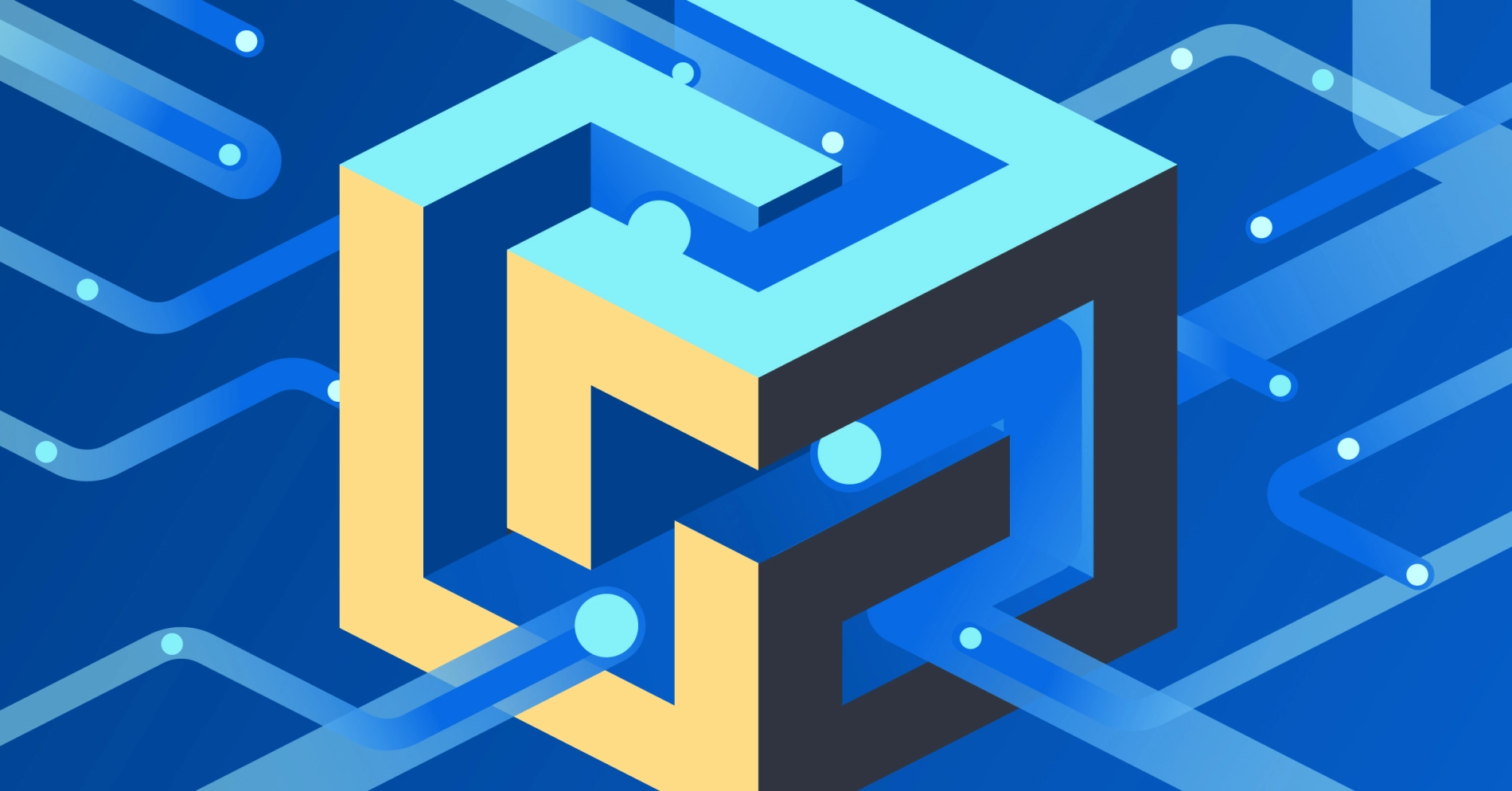
On this page
When you're working with multiple cloud locations, whether that's across data centers or across providers, you need to be aware of your networking throughput and latency. Using a cloud router means you're not transmitting data over the Internet, but rather sending your data securely on a private, direct connection.
In this guide, you'll set up and connect your first Equinix Fabric Cloud Router (FCR) to AWS Direct Connect on Amazon Web Services (AWS), following these steps:
- Log In: Log into your AWS account.
- Sign up: Use AWS marketplace to sign up for the free trial.
- Request resources: Fill out the form to turn on your Equinix availability.
- Configure your account: Set up your account.
- Create a Fabric Cloud Router: Provision a cloud router.
- Connect all the things: Set up all of your connections.
- Set up your routing: Accept the connection created through Equinix to AWS.
Step 1: Log into your AWS account
Let's use the AWS Marketplace to sign up for a trial so you can connect AWS to anywhere immediately.
Once you've logged into your AWS console, use the search bar to get to the Equinix Fabric Cloud Router with AWS Direct Connect offering on AWS Marketplace.

Step 2: Sign up for the trial
Use the Try for free button to go to the contract configuration page.

Ensure the dropdown shows a Free trial tag.
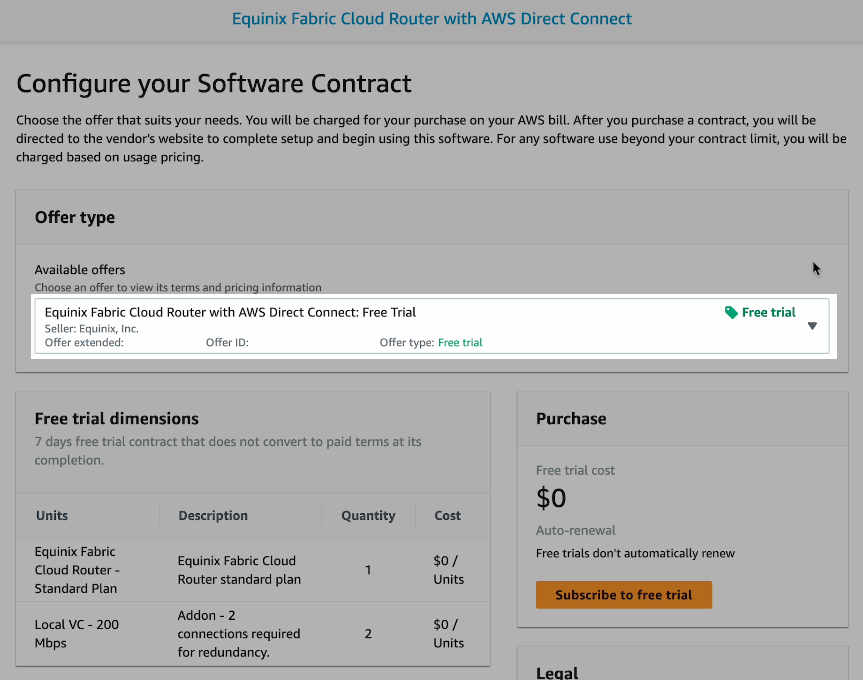
Select Subscribe to free trial.
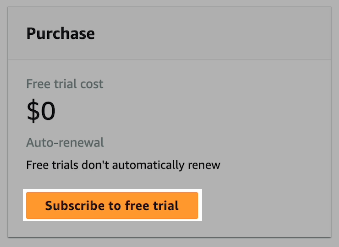
You will get an alert congratulating you on starting your free trial. There will be a button to Set up your account. Select that button.
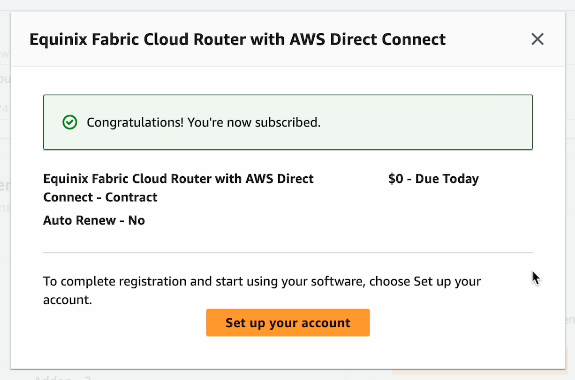
Step 3: Fill out the form
To provision your FCR, you will fill out the form on this page.
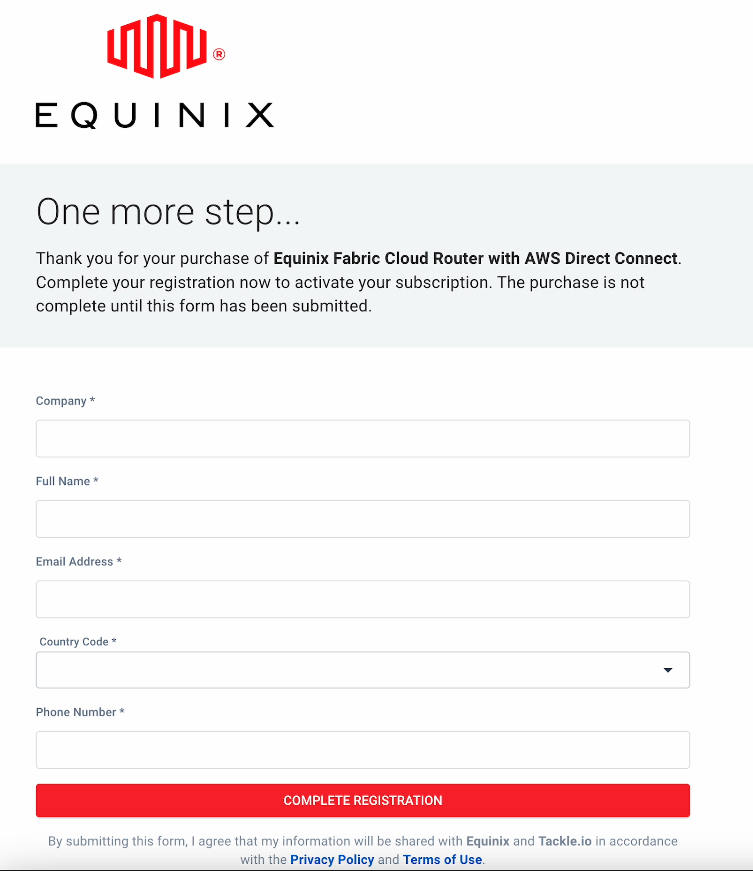
Once you've entered everything in, select Complete registration. You should get an immediate email from AWS acknowledging your AWS Marketplace purchase.
You'll wait about 10 minutes for an email from Equinix to arrive in your inbox with your account details. The email will contain your Fabric Organization, your Fabric Project number, and your Subscription Key, along with the same details about what exactly you have available as was on your trial configuration page on AWS Marketplace.

You will also receive another email from Equinix to verify your email address for your Equinix account, which gets set up when you start the free trial on AWS Marketplace.
Step 4: Configure your Equinix account
To proceed, use this second email to select Verify Email Address or use the link in the email to verify your email address and set up your Equinix account.
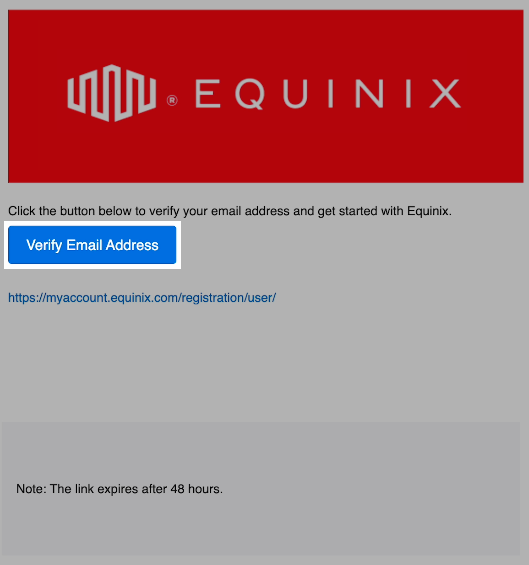
On the resulting form, generate and enter a new password, ensure it is the same in the Repeat Password field, accept the Acceptable Use Policy and Privacy Statement, then select Complete Registration.
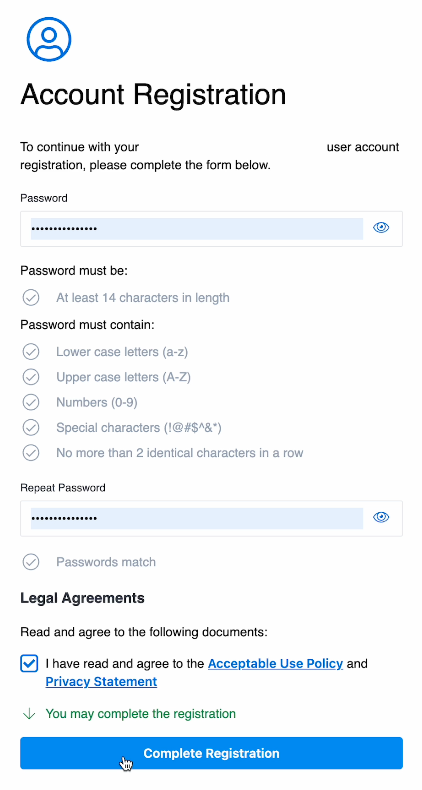
On the next page, use your email address and your new password to sign in.
Step 5: Create your Fabric Cloud Router
Now onward to the networking goodness!
From the dashboard, open Cloud Routers > Create a Fabric Cloud Router.
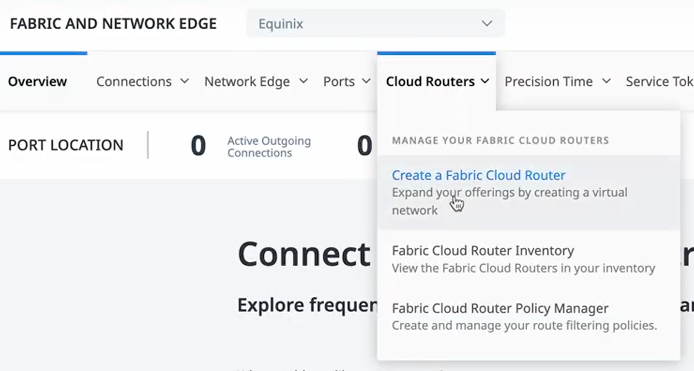
Select a location. (If you are following along and used AWS Marketplace, you will only be able to select US-based data centers due to contract details. If you've purchased Fabric Cloud Router through another system or directly from Equinix, you can use AWS Direct Connect with Fabric Cloud Router anywhere we have an onramp for AWS.) From there, select Service Provider Subscription. Go back to your email, and copy the Subscription Key you received from Equinix. Paste that key into the entry box, then select Next: Fabric Cloud Router Details.
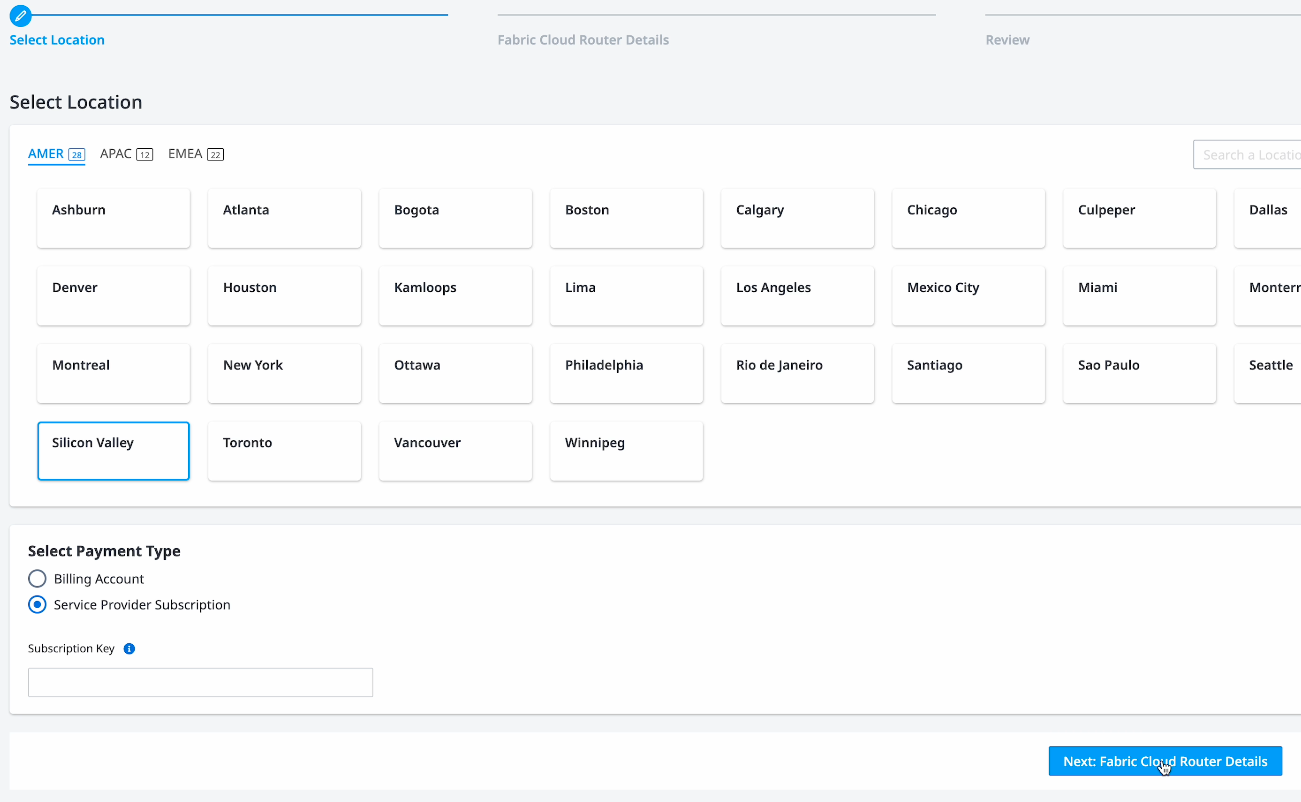
On the next page, name your cloud router. You will only have one package available to you for the router as the AWS Marketplace trial uses the Standard package only. Select Next: Review to continue.
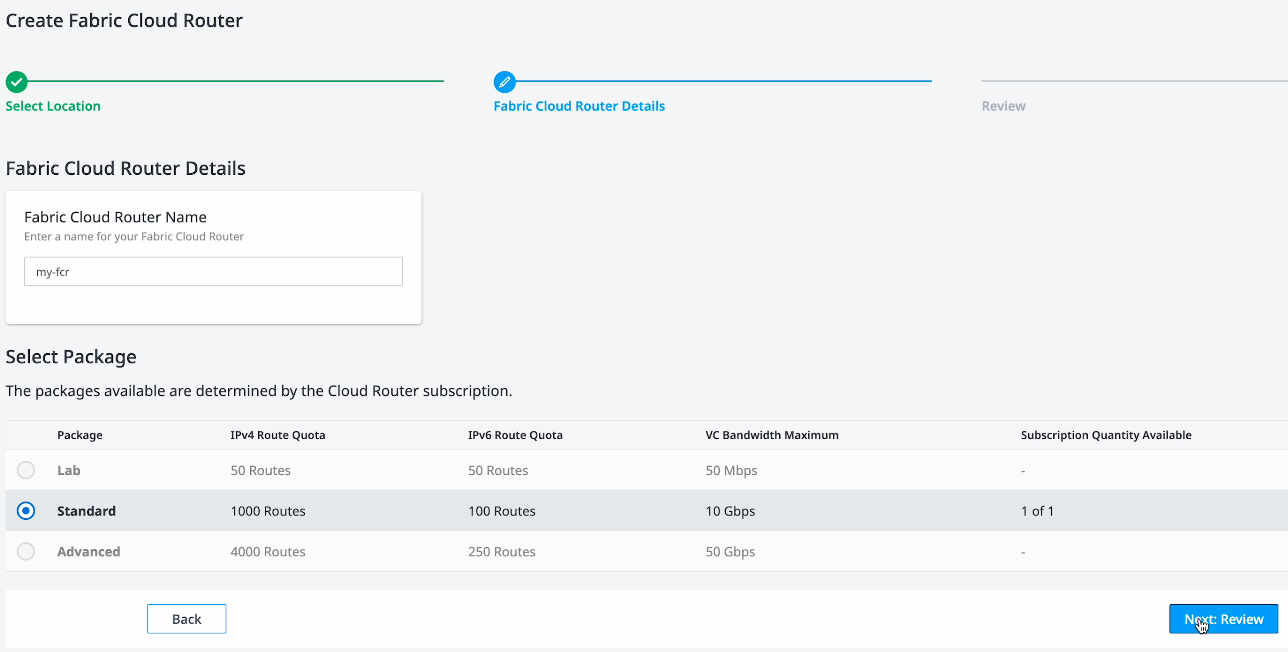
On the review page, note that your billing information will reflect that you're using an AWS account subscription.

Step 6: Set up the connections
Now let's get some things connected. In the top menu bar, open Connections > Create Connection (or select the Create Connection button in the top right).

Select AWS on the Frequent Connections page.

Then select Create Connection under the correct choice for your use case. Here, we'll select AWS Direct Connect.

Next, we'll configure the AWS connection. You can choose Redundant, Primary, or Secondary. For demonstration purposes as this is not production, we'll select Primary, but if you're setting this up for production, you probably want a redundant connection for reliability. Get your account ID from AWS, then select where you would like to connect your cloud router to.
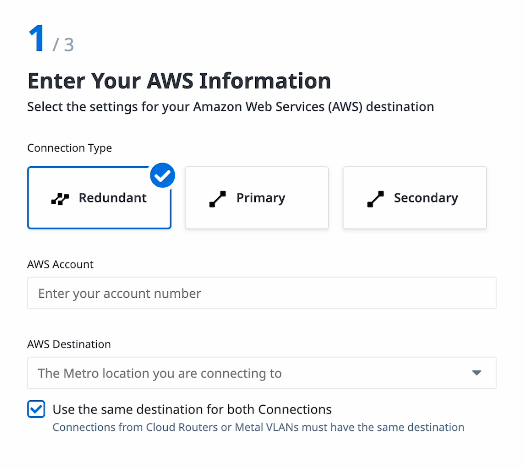
Select Cloud Router as the origin for the connection, then select the Select Cloud Router button.

In the modal that appears, select the cloud router you created in step 5. Use the Select Cloud Router button at the bottom right to continue.
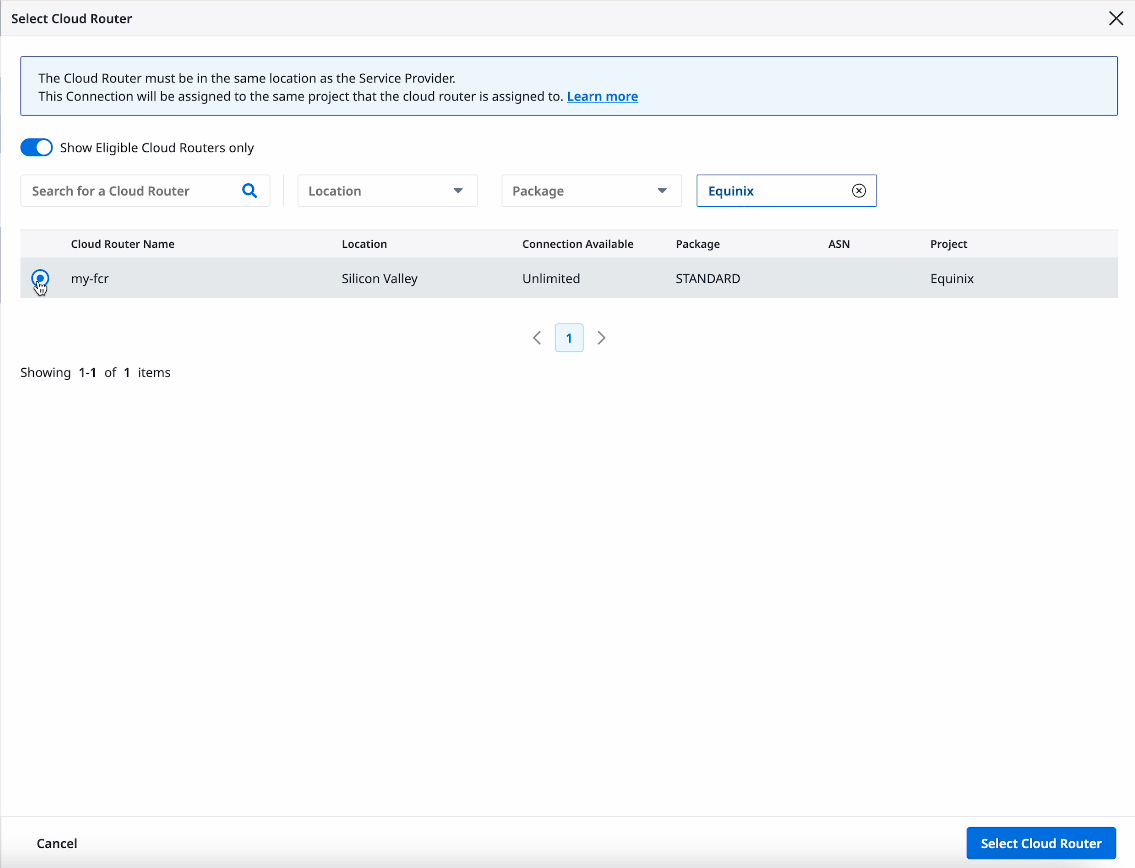
Then name the connection and select the bandwidth for the connection.
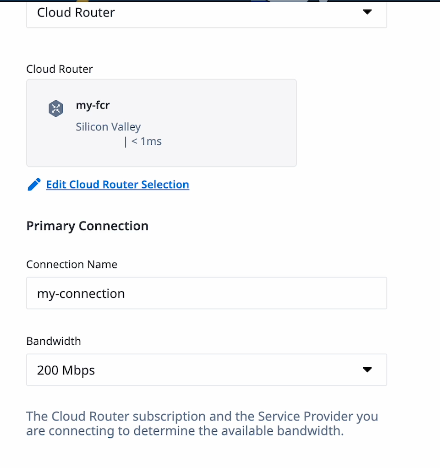
On the next screen, review and ensure everything is correct, then select Create Connection.

You can explore the Fabric Inventory if you want to check on the status of the provisioning later. Right now, you need to set up the routing changes in the AWS Management Console. You can use the link in the note on the page to get there.
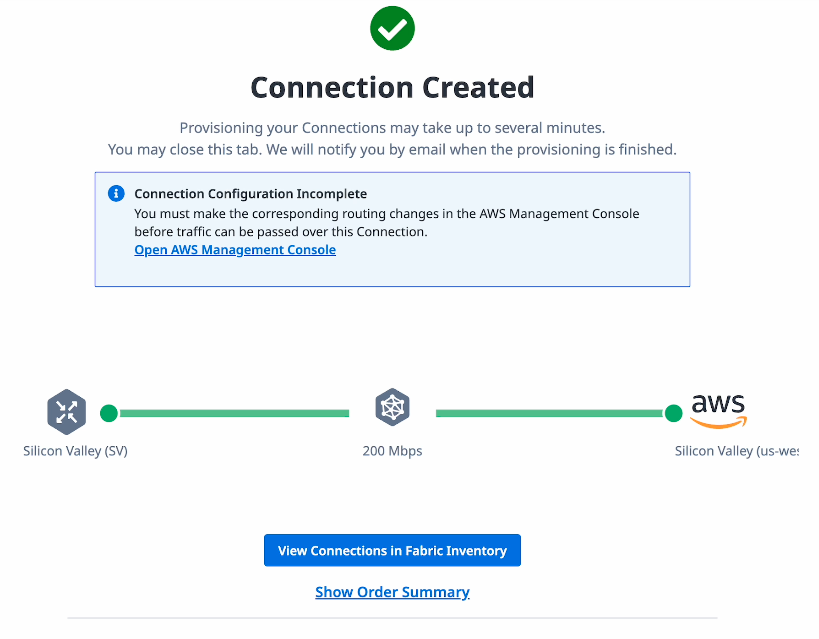
Step 7: Set up the routing in AWS
In the AWS Management Console, search for "Direct Connect" in the search bar.

Open the Connections using the left nav.
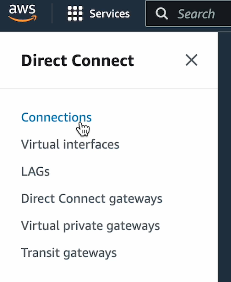
You'll find a connection waiting for you.

You need to accept the creation of that connection to use it. When you open that connection, select Accept.

You'll need to confirm one more time.
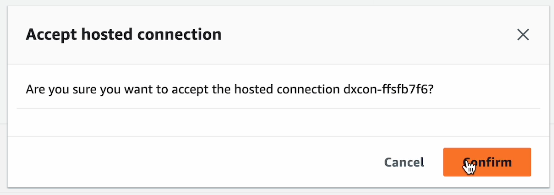
And then wait for the connection to become available in AWS!

From here, you can check on the status of the connection as it's provisioning on either the AWS Console or the Equinix Fabric Console, add VPCs from the AWS side through AWS Direct Connect, or connect another cloud on the other side of the Fabric Cloud Router. Once you're done, if you were following along as an exercise, ensure you tear down the connections and the Fabric Cloud Router to ensure you don't get charged. Or sign up for a full subscription; up to you!
Conclusion
You've now provisioned a Fabric Cloud Router and connected it to AWS Direct Connect with a Connection. From here, you can start connecting clouds together and moving data.
References
You may also like
Dig deeper into similar topics in our archives
Crosscloud VPN with WireGuard
Learn to establish secure VPN connections across cloud environments using WireGuard, including detailed setups for site-to-site tunnels and VPN gateways with NAT on Equinix Metal, enhancing...

Kubernetes Cluster API
Learn how to provision a Kubernetes cluster with Cluster API

Kubernetes with kubeadm
Learn how to deploy Kubernetes with kubeadm using userdata

OpenStack DevStack
Use DevStack to install and test OpenStack on an Equinix Metal server.